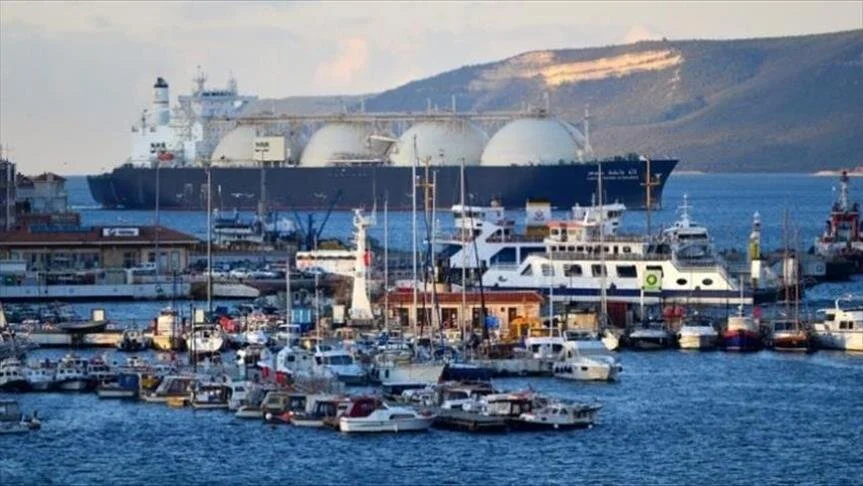Russia’s share of natural gas imported by European Union (EU) countries has fallen from 41% to 10% over the last three years, while the share of LNG has risen from 20% in 2021 to 41% by the end of 2023.
According to information from the latest LNG report published by the EU Agency for Cooperation of Energy Regulators (ACER), global LNG consumption has increased by more than 40 billion cubic meters (bcm) since the start of the Russia-Ukraine war, reaching 557 bcm in 2023.
Europe was the region with the largest increase in demand, up 57 bcm compared to 2021 and accounting for more than a quarter of the world’s LNG trade.
The restart of nuclear reactors in Japan saw a reduction in LNG demand in the region; however, Europe saw a boost in LNG arrivals in 2022 and 2023.
LNG and gas storage became the main contenders in combating the energy crises in Europe that emerged after the outbreak of the Russia-Ukraine war.
Germany led the way with the commissioning of LNG infrastructure to facilitate the highest increase in LNG imports in Europe.
EU countries imported a total of 134 bcm of LNG in 2023, accounting for 42% of total gas imports. The quantity of Russian LNG sent to the EU amounted to approximately 18 bcm.
In total, France and Spain imported the most, with 30 bcm and 25 bcm, respectively, while the Netherlands, Italy and Belgium followed.
Despite variations in the proportion of LNG in the energy basket among EU countries, ACER reports that a consistent trend among them is the increased reliance on this resource compared to 2021.
‘The ratio of LNG supply to total EU gas imports exceeded 40% in 2023, more than doubling its share in 2021. The large increase in LNG imports has led to a significant reduction in supply dependence on Russian pipeline flows in most EU member states, despite gas markets remaining tight.’
– 50 bcm of LNG capacity added since 2022
EU countries have added 50 bcm of LNG capacity to their systems since 2022. By the end of this year, this capacity is forecast to increase to 235 bcm and could meet more than 55% of Europe’s annual gas demand, based on the average gas consumption of the last five years.
According to ACER, additional projects currently in the planning phase could bring the total import capacity of EU LNG to over 260 bcm by 2025.
The report revealed that Spain’s LNG capacity had increased from 60 bcm at the end of 2021 to 67 bcm at the end of 2024.
France increased its capacity from 33 bcm at the end of 2021 to 39 bcm at the end of 2024. Germany, which had no capacity in 2021, built 10 bcm of LNG capacity in 2022 and 3 bcm in 2023. It is expected to add another 17 bcm by the end of this year.
Among other countries, Italy is expected to have 22 bcm of LNG capacity by the end of 2024, the Netherlands is forecast to have 20 bcm, Belgium 15 bcm, Greece 12 bcm, Poland 9 bcm, Portugal 8 bcm, Finland 5 bcm, and Lithuania 4 bcm.
Nonetheless, the report said that only about 60% of the total import capacity is being utilized.
Mild weather conditions that reduced natural gas demand over the past winter also supported Europe’s LNG imports.
Transit restrictions in the Panama Canal have also led the US to send the majority of its LNG deliveries to Europe rather than Asia.
The share of renewable energy in electricity generation in Europe reached a record high of 45% in 2023.
‘Moreover, around 60% of the volumes in the EU’s underground storage are still available as of April 1, equivalent to around 60 bcm of natural gas, or around 45 million tons of LNG. The stocked volumes exceed the annual demand for EU LNG spot imports and contribute to reducing price volatility.’

